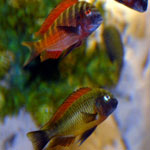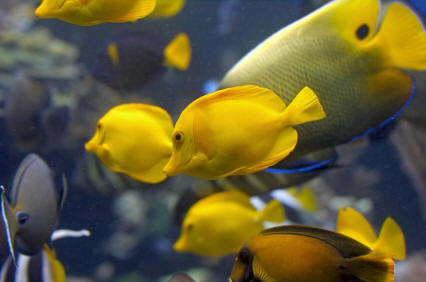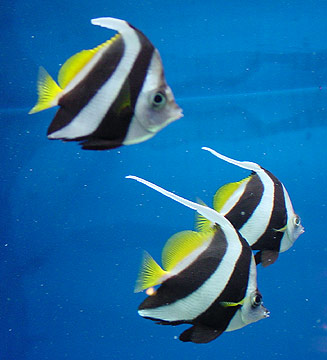Assorted Tropheus Cichlid

|
Scientific Name: Tropheus moorii Price: Upon Request Origin: Lake Tanganika, Africa Family: Cichlidae NOT AVAILABLE NOW |
|
Other Names: Tropheus moorii, Blunthead cichlid |
|
Technical Info
Temperature: 26 - 28 ℃
pH: 8 - 9
GH: 18 - 22
Max size: 15 cm
Min Tank size: 100 Ltr
Position in Aqua: No special swimming level
Description
Tropheus moorii, is a species of African Cichlids. There are over 40 different morphs of this species disbursed throughout the lake. The fish comes in many colors and patterns ranging from dark green to flame red and yellow. Tropheus moorii comes in a dazzling array of colors and color patterns. There are well over 40 different geographical variants of T. moorii, each with its own distinctive morphology. A sexually monomorphic species, Tropheus moorii can be quite challenging to sex. The upper lip of males is more prominent (i.e., larger) than that of females. Males' lips on average tend to be more off-white as well, due to their constant lip-locking aggression. Furthermore, males tend to have a turned-up nose while females tend to have a greater slope and rounded nose, making the shape of their head ellipsoid. Males will also grow at a faster rate (generally) and display their adult colors sooner. Males' coloration is also often more bold than females' because they like to show it off when courting females. Adult males will also tend to have a deeper body, whereas females appear more slim and streamline.
Food
Tropheus moorii need to have the proper diet. With an improper diet they will get bloat, which will almost definitely result in the death of them. They are herbivorous and can be extremely sensitive to food high in animal protein. In the wild they are algae grazers. They can handle small amounts of protein. After all in the wild they consume micro organisms and small crustaceans that are in the algae when they are eating the algae. Spirulina flakes are a good staple diet for them along with some frozen algae pellet. Try to make sure you get flakes with spirulina as the main ingredient, as many foods labeled spirulina have fish meal as the main ingredient. The flakes that contain spirulina or other algae as the main ingredient are often the most expensive but are very well worth it. Foods high in protein will cause bloat. They can also eat some spinach and peas occasionally.
Breeding
Tropheus moorii is a maternal mouth-brooder and the female will pick up the eggs as soon as they have been released. She will then prod the male's went with her mouth until he fertilizes the eggs inside her mouth. The female Tropheus moorii will carry the eggs inside her mouth for 3-4 weeks. After 10-15 days of incubation, you should ideally move her to her own aquarium where she can not be harassed by the males. In a confined environment such as an aquarium, the stress she experiences from the harassment can cause her to spit out her eggs. A Tropheus moorii female can eat even when brooding and should therefore be given plenty of food in the separation aquarium. She must be given her own aquarium – do not attempt to house her with any other brooding Tropheus moorii female. Two brooding females in the same aquarium without any male present will only result in a lot of violence. The eggs will hatch inside her mouth and the fry are quite large when released. You can start feeding them crushed green flake food. They are normally not big enough to eat lettuce until they are a few months old.
Compatible with
Ideal tank mates include: African Catfish, Other African Cichlids, Plecos
Note
Tropheus moorii should ideally be kept in groups of at least 12 specimens to disperse aggressiveness. It is a highly hierarchical species and should therefore only be kept in colony proportions. Different aquarists have had very different experiences from this fish, but many report reaching good results when keeping two males and at least ten females.

